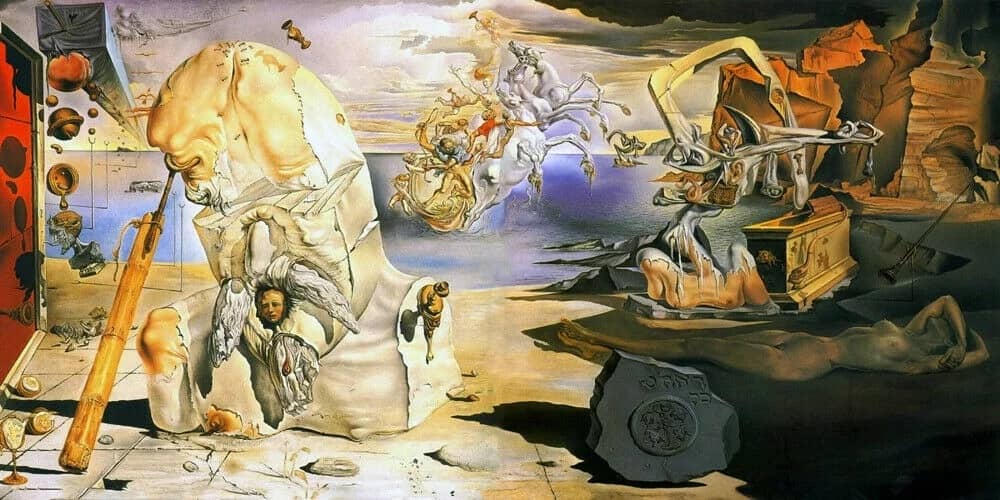The Apotheosis of Homer, 1944 by Salvador Dali

Salvador Dali was influenced at a young age by Greek History and art. Many scholars attribute this contact with Greek mythology to serve as an influence in Dali's surrealistic work. Dali's painting The Apotheosis of Homer reduces Homer to a broken bit of statuary, a relic, while the solid temple of the muse itself melts. The ethereal horse, which may be Pegasus, casting off riders attempting to reach the stars again signals myth's cessation as a legitimate method of contemplating humanity's existence and signals the changing state of not only art, but also thought and reasoning as well.
At the right hand side of the canvas, Gala reposing, deep in slumber, while the doors of her dream world are flung wide open onto a richly imaginative space, replete with a melange of symbols, elements and activity. A blind Homer, hewn from rock, is seen at left, from whose mouth the angel of speech is being born, as Dali himself once explained it.























